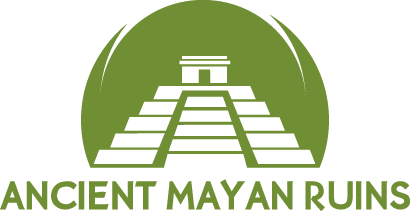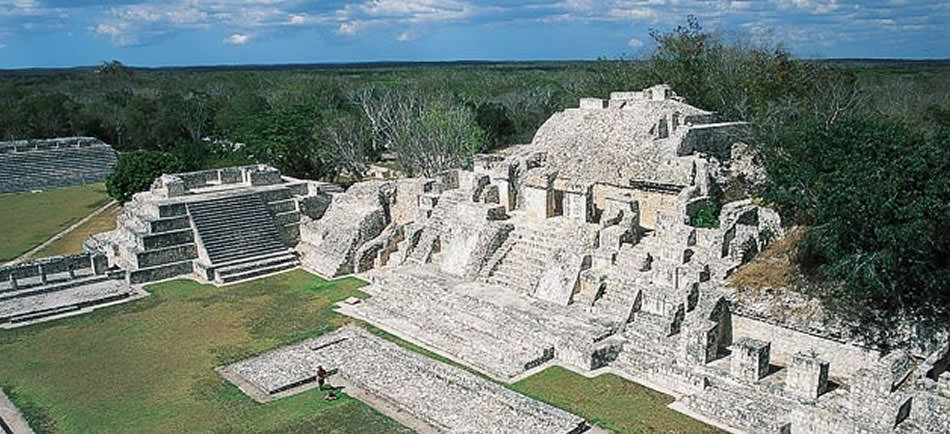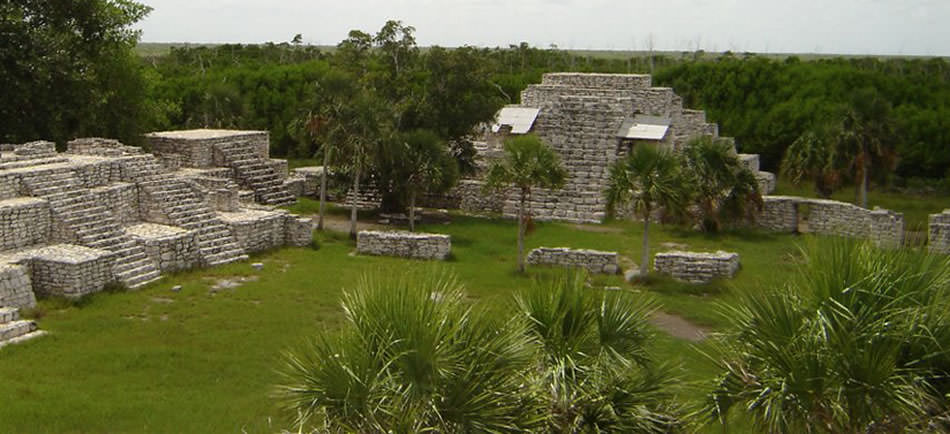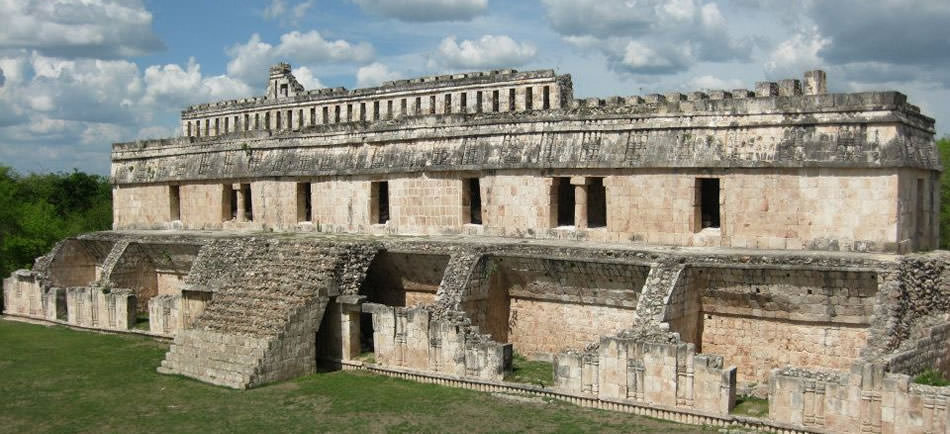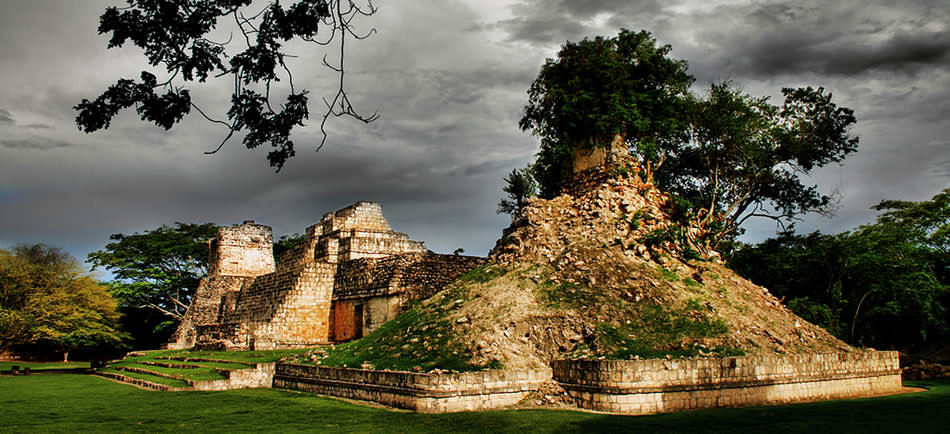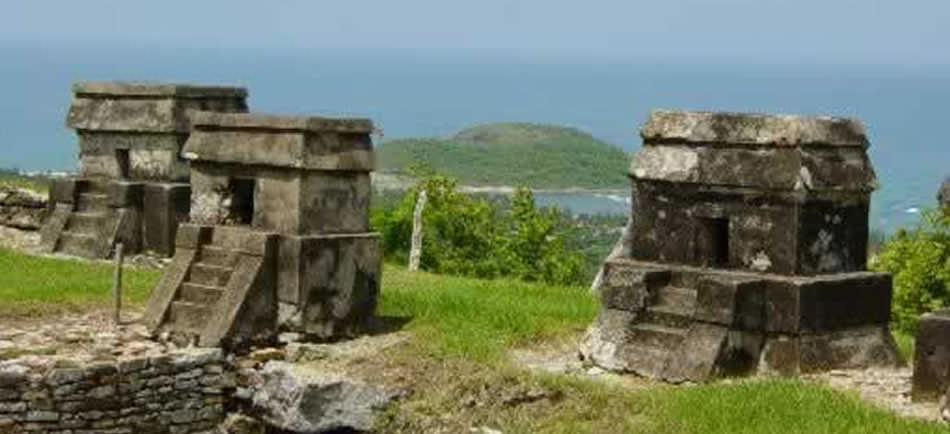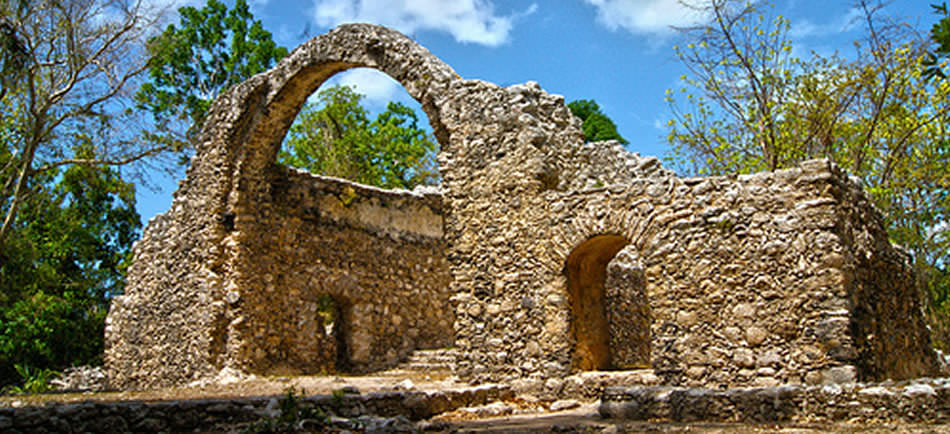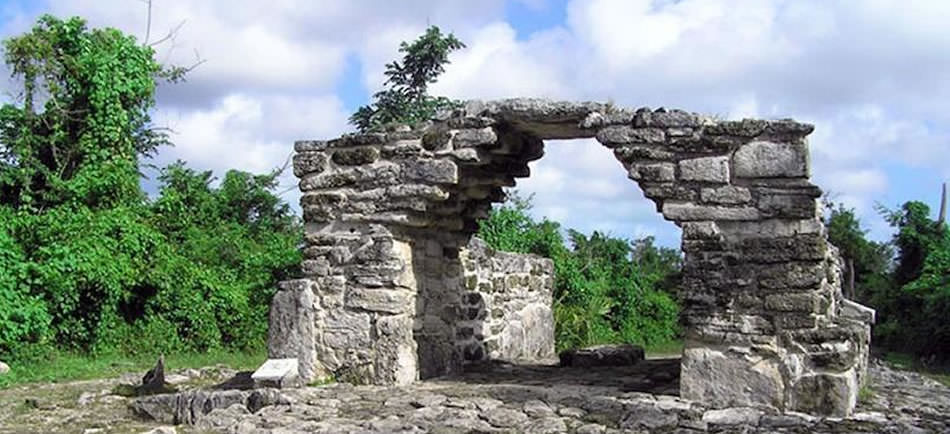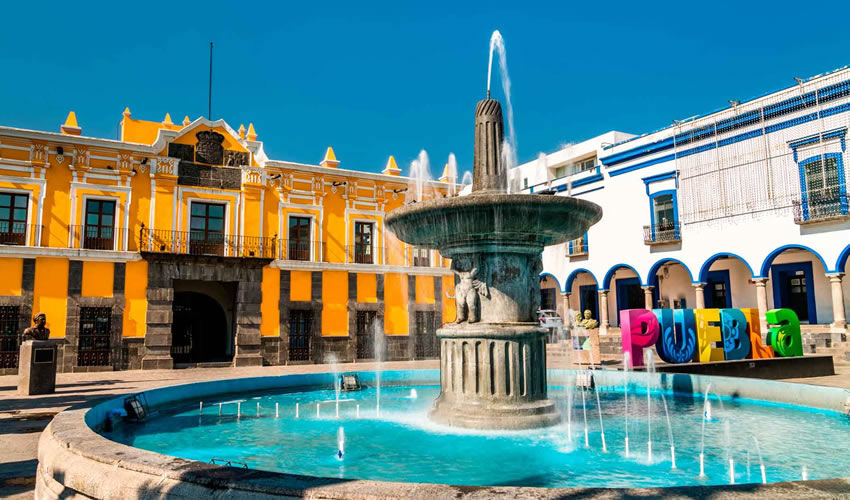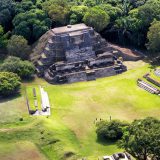
Becan
Becan is a fascinating archaeological site located in the heart of the Yucatán.
Becan offers visitors a captivating glimpse into the ancient Maya civilization. This lesser-known site provides an intimate and enriching experience for history enthusiasts and casual tourists alike.
Becan is renowned for its well-preserved structures, intricate carvings, and unique moat that encircles the central area, making it a distinctive destination for those eager to delve into Maya history.
Becan means “ravine or canyon formed by water”. The name was given to its most prominent and unusual feature: a man-made ditch that dates back to the 6th century which served both defensive and symbolic purposes.
Becan is a captivating destination that offers a blend of history, and natural beauty. Its relatively remote location makes it a perfect spot for those looking to explore the wonders of the Mayan civilization without the crowds.
Visitors can explore numerous temples, pyramids, and palaces, many of which are interconnected by ancient causeways. The central acropolis is particularly impressive, featuring steep staircases and expansive plazas.
Becan promises an unforgettable journey through time.
Geography and Environment
Nestled in the lush jungles, Becan is enveloped by rich biodiversity and vibrant flora.
The site is characterized by its rolling hills and verdant landscape. The surrounding environment, rich in wildlife and tropical vegetation, enhances the sense of adventure and discovery as you navigate through the site.
The Best Time to Visit Becan
The best time to explore Becan is from November to April.
During these months, the weather is more temperate, with lower humidity and cooler temperatures, making it ideal for outdoor activities, extended tours, fewer mosquitoes, and clearer skies, perfect for photography.
The peak tourist season is from December to February.
History and Chronology
Becan stands out in the Maya world due to its unique moat, which encircles the central area. This moat, unparalleled in the region, has sparked much debate among researchers.
Some believe it indicates a history of continuous warfare between Becan and neighboring cities, while others see it as a clear spatial division of social classes, with the elite residing in the interior monumental structures.
The moat likely served as a water reservoir, crucial in this area where rainwater does not easily collect. Another method used by the ancient Maya in Becan was the underground cisterns designed to capture and store water.
Access to Becan was originally through seven entrances: three to the north, one to the west, two to the south, and one to the east, which is the current entry point for visitors.
Outside the moat, numerous smaller structures once served as homes, granaries, sanctuaries, and agricultural terraces for the broader population that supported Becan’s ruling dynasty.
The seven entrances symbolically represent the seven openings in the human head: two eyes, two ears, two nostrils, and the mouth, emphasizing Becan’s significance as a governmental “head.”
Academically, Becan is classified as a Regional Capital within the Río Bec architectural zone, one of the most important areas in Campeche. The site also shows significant influence from the Chenes architectural style.
Evidence of human occupation at Becan dates back to around 600 BCE.
Its peak prosperity was between 600 and 1000 when Becan rose to prominence as a regional capital. This period saw a concentration of goods and services from numerous settlements due to Becan’s strategic location.
Becan’s monumental architecture and sophisticated infrastructure highlight its importance. Becan was a center for administration, trade, and ceremonial activities, attracting people and resources from the surrounding areas.
After its zenith, Becan experienced a gradual decline in population and influence, leading to its eventual abandonment around 1450 CE.
Becan Archaeological Zone
Becan features several main structures. The site is characterized by its impressive architectural features and ceremonial spaces spread over an area that showcases both monumental structures and smaller residential complexes.
Among the notable structures is Structure I, distinguished by its 2 truncated pyramids or solid lateral towers reaching a height of 15 m with 4 openings on their tops believed to have been used for astronomical observations.
Adjacent to these towers, on the southern side, are 2 levels of vaulted rooms built upon a rocky elevation.
Structure II, which closes off the plaza on the west side, exhibits several front and side rooms.
The rear chambers feature banquettes indicating their residential use.
The facade is constructed with finely carved limestone blocks and was once adorned with checkerboard panels decorated with motifs resembling the rattles of the sacred serpent and sunken crosses on walls that resemble fringes.
Structure III boasts a central staircase flanked by masonry rooms arranged on 2 levels. Facing the staircase is a circular altar where various offerings, including human sacrifices as indicated by scattered bone fragments from different individuals, were likely performed.
Structure IV is characterized by a broad central staircase leading to an upper courtyard, with rounded corners at the base and body of the building. On the summit, the foundations of several rooms face the courtyard, adorned with zoomorphic masks crafted from stone mosaic on the facade.
Structure VIII stands out as a voluminous single-story building with towers at both ends and a massive mask on the central facade. The upper interior housed nine rooms lacking natural ventilation or light likely used as storage or for religious activities requiring darkness and isolation, such as fasting, prayers, or self-sacrifices.
Structure IX rises as the tallest building on the site, towering at 32 meters. It once featured a grand frontal staircase leading to a temple at the top, possibly serving as the main sanctuary of Becan. Traces of two enormous jaguar heads still guard the upper entrance of the building.
Structure X consists of 12 rooms spread across two levels. At its summit, a temple was erected, its facade decorated with representations of Itzamná, the creator deity also known as the Earth Monster.
The symbolic significance of the complex is complemented by a basketry or upper ornamentation adorned with stucco figures, of which remnants remain on a pierced wall. A preserved lintel divides the two central rooms, supporting a crest adorned with various painted stucco motifs.
How to get to Becan Ruins?
The nearest towns and villages:
- Xpujil is situated approximately 8 kilometers away
- Chicanna is located about 6 kilometers from Becan Ruins.
Both Xpujil and Chicanna provide accommodation, dining, and basic amenities for visitors exploring the ruins of Becan. Traveling from either of these points allows for easy access to this significant Maya archaeological site.
You can also visit Becan from several major towns and cities in the region:
- Chetumal is approximately 150 kilometers northeast of Becan
- Campeche Cyty is about 250 kilometers west of Becan
- Merida is located approximately 300 kilometers northwest of Becan
These cities provide larger transport hubs, accommodations, and various amenities, making them suitable starting points for visiting Becan and exploring the surrounding Maya archaeological sites in the Campeche region.
Tourist Information
- Becan Ruins are open to visitors from 08:00 to 17:00 daily.
- The entrance fee is generally modest, around 80 MXN (2024).
What to bring and what to wear?
Bring water and snacks. Ensure you stay hydrated, as exploring the ruins can be physically demanding, especially in the heat. Light snacks or energy bars can keep you fueled during your visit.
Wear sturdy, comfortable shoes suitable for walking and climbing, as the terrain can be uneven. Opt for lightweight, breathable clothing to stay cool. Long sleeves and pants can also help protect against insect bites.
Bring a light jacket or sweater that you can easily remove as the day warms up.
Protect yourself from the sun with a wide-brimmed hat and sunglasses. The area can have mosquitoes, especially during certain times of the year, so bring repellent to avoid bites.
Capture the beauty and history of the ruins, but remember to respect any rules regarding photography. Enjoy your exploration of Blamku Ruins, and immerse yourself in the fascinating history they offer!
